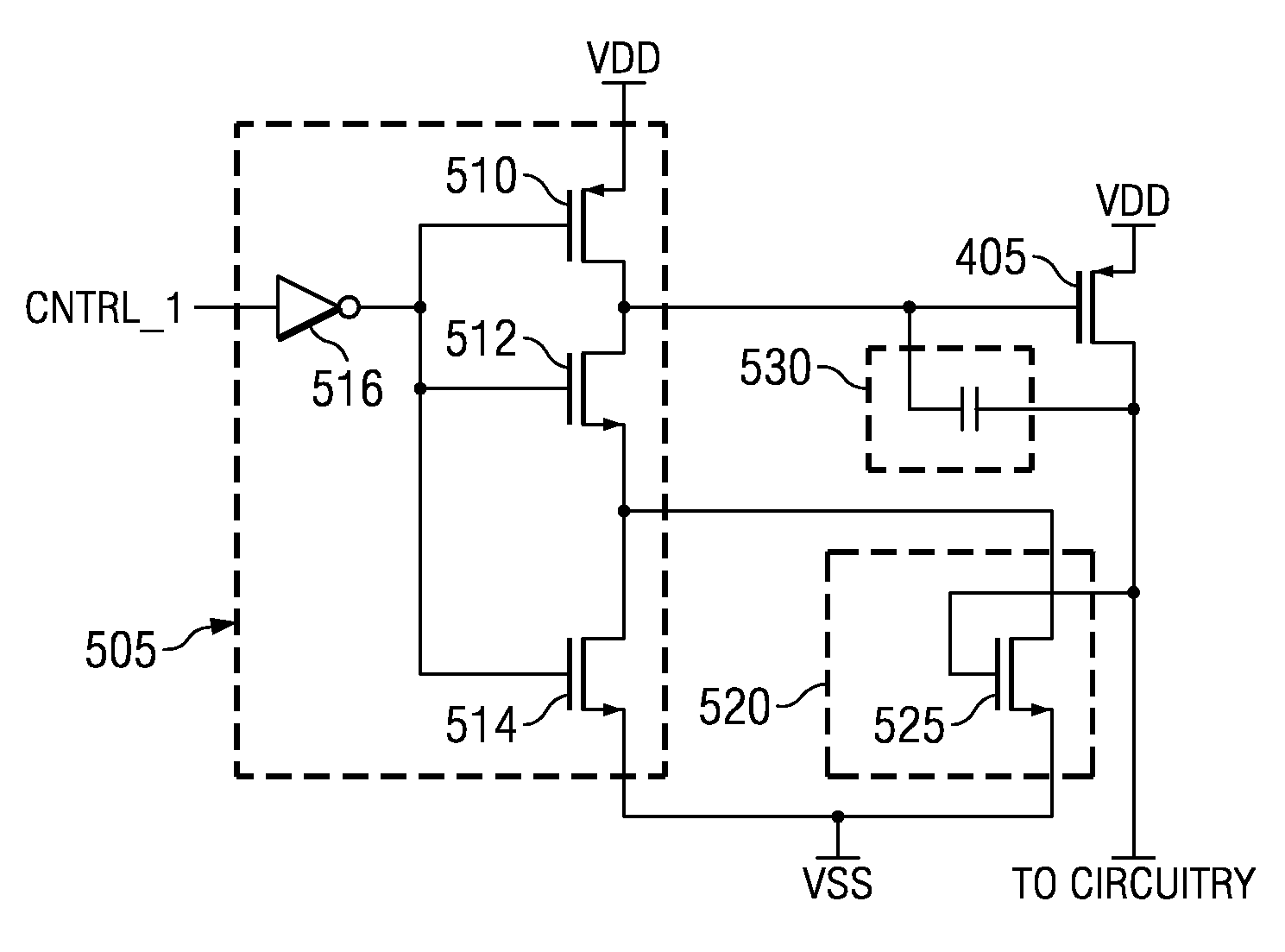Potential and rate adjust header switch circuitry reducing transient current
a header switch and transient current technology, applied in the field of system and method of integrated circuits, can solve the problems of large transient current, large transient current damage to circuitry transistors, difficult proposition of providing power to circuitry in integrated circuits (via turning on internal voltage rails), etc., to achieve the effect of reducing the magnitude and abruptness of current, and effective increasing the rise time of a current flowing
- Summary
- Abstract
- Description
- Claims
- Application Information
AI Technical Summary
Benefits of technology
Problems solved by technology
Method used
Image
Examples
Embodiment Construction
[0024]The making and using of the presently preferred embodiments are discussed in detail below. It should be appreciated, however, that the present invention provides many applicable inventive concepts that can be embodied in a wide variety of specific contexts. The specific embodiments discussed are merely illustrative of specific ways to make and use the invention, and do not limit the scope of the invention.
[0025]The present invention will be described with respect to preferred embodiments in a specific context, namely a header switch for providing power to logic circuitry in an integrated circuit. The invention may also be applied, however, to other power supply applications, wherein there is an interest in reducing power-on transient currents and there is sensitivity to large transient currents.
[0026]With reference now to FIG. 1, there is shown a diagram illustrating an arrangement for providing power to circuitry 100 in an integrated circuit through the use of a transistor 10...
PUM
 Login to View More
Login to View More Abstract
Description
Claims
Application Information
 Login to View More
Login to View More - R&D
- Intellectual Property
- Life Sciences
- Materials
- Tech Scout
- Unparalleled Data Quality
- Higher Quality Content
- 60% Fewer Hallucinations
Browse by: Latest US Patents, China's latest patents, Technical Efficacy Thesaurus, Application Domain, Technology Topic, Popular Technical Reports.
© 2025 PatSnap. All rights reserved.Legal|Privacy policy|Modern Slavery Act Transparency Statement|Sitemap|About US| Contact US: help@patsnap.com



